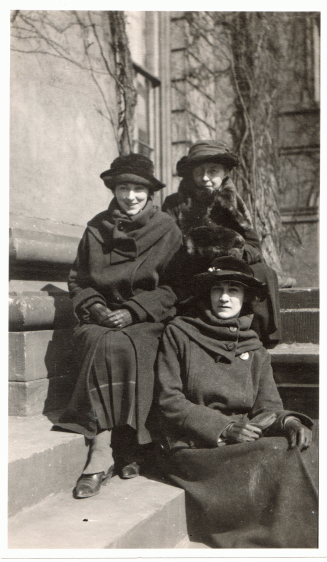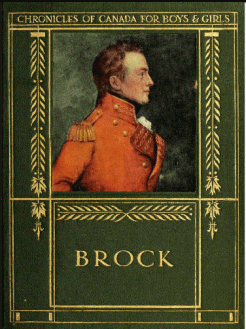
Velma Jane Moore in Toronto, 1921
Librarianship School
Continuing with the story of my grandmother Velma Jane Moore’s time at the Toronto Public Library from 1919-1922, I learned that she was released from duties in 1920 to attend librarianship training:1

I had some difficulty pinning down the exact course of instruction Velma took because librarianship training in Ontario was rapidly developing at this time:
In 1916 the Department of Education established a month-long program to train librarians called the Short Course Library Training School. The course was expanded to two months in 1917, and subsequently in 1919 it was lengthened to three months and renamed Training School for Librarianship. In 1923 the school was renamed the Ontario Library School. In 1928 the program was transferred to the Ontario College of Education, University of Toronto.2
You can only imagine my shouts of jubilation when I found her name listed in the Ontario Library Review as a student completing the three-month Department of Education Training School for Librarianship, 1920:3

The Practice Work
Not only that, there was an entire write-up of the training! I was quite surprised to see that the majority of Velma’s time was not spent on the intricacies of the Dewey Decimal System:
The practice work in connection with the lectures in circulating and work with children occupied a week in October. This was found more satisfactory from every point of view than the practical work extended throughout the term.4
The “practice work” for Velma’s position as a cataloguer consisted of the following:5

The instruction in cataloguing was given by Velma’s boss at the Toronto Library, Winifred Barnstead, whom I wrote about in a previous post.6
Canadian Literature
Velma’s librarianship training included a number of lectures and presentations on Canadian literature. I’ve included highlights below to convey a sense of what her experience would have been like.
Thomas G. Marquis delivered five lectures on “the outstanding literature of Canada, dealing with history, biography, exploration and travel, and poetry.”7 Thomas Guthrie Marquis (1864-1936) was best-known as a writer of Canadian history, including Stories of New France (with co-author Agnes Macher),8 The Jesuit Missions: A Chronicle of the Cross in the Wilderness, and the children’s book Brock.
Hector Garneau, chief librarian of the Montreal Public Library, presented both his personal reminiscences of noted French-Canadian authors and a formal lecture on French-Canadian literature described as “a brilliant résumé of the poetical, historical, and journalistic works of the French-Canadian writers.”9
Gareau was the chief librarian at the Montreal Public Library from 1916-1930. He revised and expanded on a Canadian history written by his grandfather François-Xavier Garneau.10 He also edited a book of poems by this father, Alfred Garneau.11

John Ridington, the librarian of the University of British Columbia, gave an address on “The Poetry of War.”12 Although he had no formal training in the field, Ridington served as the first librarian at UBC, from 1915-1940.13 His biographical information in the UBC archives suggests that he had a bit of a checkered history, holding various jobs as a teacher, newspaper editor and publisher, and real estate salesman, with no known details about his formal education.14
Believe it or not, I actually found the full text of his “Poetry of War” address in the Pacific Northwest Library Proceedings: September 5-6, 1916 on pages 52-90. The proceedings note that at the conclusion of his address:
Owing to the lateness of the hour, the symposium on books which was to have been led by Miss Kostomlatsky with a talk on recent poetry, was omitted and the meeting was formally adjourned by the President.
The report of the Resolutions Committee, which for the lack of time, was not read at the meeting, was submitted to the Executive Board . . . 15
Keep in mind that the address Velma heard was given after two more years of war poetry had been written. She must have left that address with a very sore bottom indeed!

The Loquacious Mr. Ridington
Clara Whitehill Hunt presented on her work as the children’s librarian for the Brooklyn Public Library.16 When I looked for more information about her, I learned that she was very influential in promoting the importance of providing children with access to the best available books.17 Her accomplishments included overseeing the design of the world’s first library built solely for children and chairing the American Library Association committee that established the John Newbery Medal for children’s literature in 1921.18
Judging from my mother’s childhood books that she passed on to me when I first learned how to read, Velma took the information from Hunt’s presentation very much to heart!
When I did a little more digging to see if Hunt had written any books, I found What Shall We Read to the Children, published in 1915. I was very taken with this book because it is an in-depth and engagingly-written discussion of how parents and children should interact with books together. In fact, I would go so far as to say that Hunt’s methods are very much in alignment with today’s homeschooling movement.
Here is a just a brief sample:
The baby’s first taste of poetry should be given not later than a month after he alights, trailing his clouds of glory and with the music of his heavenly home attuning his ears to a delight in rhyme and rhythm long before mother’s songs convey word meanings to his mind. There never was a normal baby born into this world who did not bring with him a love for poetry; and the fact that so few adults retain a trace of this most pure delight points to the need of conscious effort on the parent’s part to foster the child’s natural gift.19

Clara Whitehall Hunt and Grace Donaghy in 1936, Brooklyn Public Library, Brooklyn Collection
And a Party, Of Course!
In keeping with the fact that librarians just want to have fun, there was a party involved:20

Final Thoughts
I think Velma would have enjoyed the practice work and the wide range of lectures in equal measure. Throughout her life, she was a roll-up-your-sleeves-and-get-the-job-done kind of woman, but at the same time, she had a great love of literature and, later in her life, painting.
From my own perspective, I am not well-versed in Canadian literature (expect for a nodding familiarity with the work of Alice Munro). Reading about Velma’s rich literary heritage has me thinking that I need to get in touch with my Canadian literary roots!
1Winifred G. Barnstead, “Reports from the Departments: Cataloguing Division,” Toronto Public Library Thirty-Seventh Annual Report, 1920, 16.
2Ontario Ministry of Government and Consumer Services, “Applications for Admission to the Ontario Library School,” Archives of Ontario, accessed September 22, 2018, http://ao.minisisinc.com/scripts/mwimain.dll/144/ARCH_DESC_FACT/FACTSDESC/REFD+RG+2-226?SESSIONSEARCH#order.
3“The Department of Education Training School for Librarianship, 1920,” Ontario Library Review and Book Selection Guide V, no. 3 (February 1921): 2.
4“The Department,” 70.
5“The Department of Education Training School for Librarianship, 1919,” Ontario Library Review and Book Selection Guide III, no. 4 (May 1919): 90.
6“The Department,” 72.
7“The Department,” 70.
8“MARQUIS, THOMAS GUTHRIE (1864-1936),” Provincial Archives of New Brunswick, accessed March 3, 2019, https://archives.gnb.ca/Search/Hamilton/DMB/SearchResults.aspx?culture=en-CA&action=0&page=591.
The Jesuit Missions: A Chronicle of the Cross in the Wilderness, February 19, 2007, image, accessed March 3, 2019, https://archive.org/details/jesuitmissionsch04marquoft/page/n7.
Brock: The Hero of Upper Canada, November 2015, image, https://archive.org/details/brockheroofupper00marq.
Stories of New France, February 14, 2007, image, https://archive.org/details/storiesofnewfran00machuoft/page/n5.
9“The Department,” 70-71.
10“Garneau, Hector,” Archives de Montréal, accessed March 3, 2019, https://archivesdemontreal.ica-atom.org/garneau-hector.
11“Garneau, Hector,” Archives de Montréal.
Nos Bibliothocaires, 19-, image, CA M001 BM001-05-P0771, Archives de Montréal.
12“The Department,” 71.
13David Strangway, President’s Report on the Library (Vancouver: University of British Columbia, 1987), 6.
14Christopher Hives, ed., Ridington Family fonds (Vancouver, BC: University of British Columbia, 2015), 1.
15Proceedings of the … Annual Conference of the Pacific Northwest Library Association., September 5-6, 1916 (Tacoma, WA: Pacific Northwest Library Association, n.d.), 90.
16“The Department,” 70.
[unknown]. 1918. “John Ridington.” P. UBC Archives Photograph Collection. doi:http://dx.doi.org/10.14288/1.0143103.
17“Treasures of Childhood: Books from the Hunt Collection of Children’s Literature, Curated by Leonard S. Marcus,” Brooklyn Public Library, accessed March 17, 2019, https://www.bklynlibrary.org/events/exhibitions/treasures-childhood-books.
18“Treasures of Childhood,” Brooklyn Public Library.
19Clara Whitehill Hunt, “The Poetry Habit,” in What Shall We Read to the Children (Boston and New York: Houghton Mifflin, 1915), 14-15.
20“The Department,” 71.






















